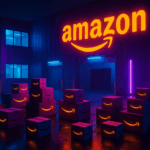As the holiday season approaches, U.S. consumers brace for higher costs in holiday shopping due to existing tariff policies. Analysts predict these tariffs will influence consumer spending on gifts, decorations, and holiday staples. Christmas is typically a time for cheer and connection; however, economic pressures threaten to dampen the spirit with anticipated financial constraints. While some families may be able to absorb these costs, many may face the reality of rethinking their spending habits this year.
Similar stories of rising holiday costs have emerged previously, often linked to tariffs and economic policies impacting import prices. Past years have also seen concerns over consumer spending during festive seasons. Reports from former holiday periods have consistently highlighted how international trade dynamics affect consumer pockets. Comparing historical trends allows better understanding of the recurring challenges consumers face annually during the holidays.
Are Electronic Costs Deteriorating Budgets?
Tariffs could increase individual spending on holiday gifts by $132, impacting consumer electronics significantly.
“For most Americans, spending an extra $132 at the holidays is significant,”
remarked Matt Schulz from LendingTree. Items like clothing and accessories are also expected to burden consumers’ wallets, increasing uncertainty about gift-giving traditions this season.
How Are Tariff-Imposed Costs Affecting Holiday Décor?
Non-gift items also face hikes; with products like artificial Christmas trees and lights, mainly sourced from China, increasing by 10 to 15 percent. Manufacturers pass on some of the tariff costs, notwithstanding efforts to absorb the financial strain. Real Christmas trees present as a cost-stable option, with most growers choosing to maintain prices, providing a relative relief for those avoiding fake alternatives.
Exorbitant tariffs impact holiday décor, as indicated by the American Christmas Tree Association. China, the leading exporter of holiday decorations to the U.S., accounts for significant imports of such items. With tariffs as high as 67 percent on Chinese imports, consumers will likely feel squeezed when decorating their homes.
“Christmas tree and decor suppliers and retailers have done all they can to manage the unpredictability,”
stated Jami Warner of the ACTA.
Nevertheless, the prospect of a pricier holiday season hasn’t deterred potential record spending. The National Retail Federation suggests spending may exceed $1 trillion, with electronics and clothing continuing as top gift choices. Despite increased prices, consumers are prepared to indulge a little more for the festive period.
Though tariffs pose challenges, adaptability within consumer markets persists. September data show artificial trees maintain traction among families, despite price surges. Many are determined to uphold the seasonal tradition, reinforcing the market‘s resiliency. Shoppers are still keen on preserving the customary holiday experience.
Understanding the broader impact of tariffs on holiday spending provides valuable insights for consumers. Evaluating historical data alongside current market implications helps foresee potential financial decisions. The intertwining of policy decisions and holiday cheer demonstrates complexities that may alter consumer habits. Yet, the enduring spirit of the holiday season remains alive as families navigate challenges with practicality and foresight.










